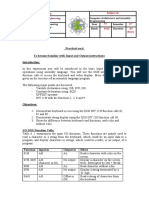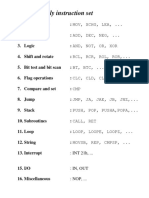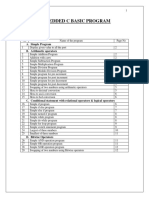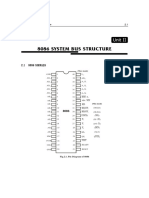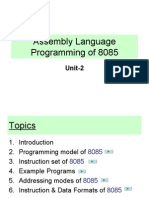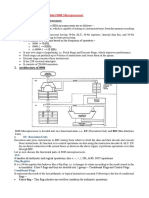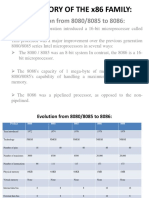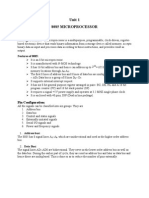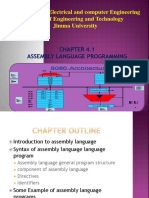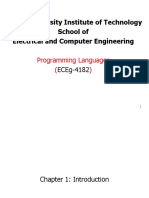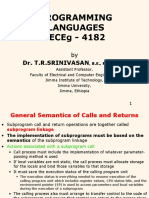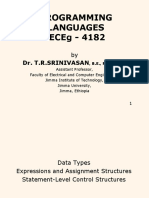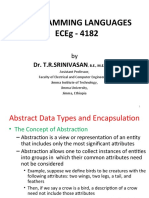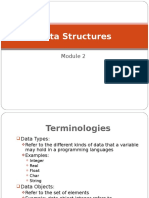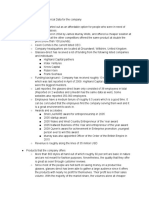100% found this document useful (1 vote)
163 views46 pagesChapter 4.1 Introduction To Assembly Language
The document discusses machine language, assembly language, and the assembly process. It provides the following key details:
- Machine language uses 1s and 0s while assembly language uses mnemonics that are easier for humans to read. An assembler translates assembly language instructions into machine language.
- Learning assembly language helps understand how microprocessors work at a low level. It also allows writing faster and more optimized programs compared to high-level languages in some cases.
- The assembly process involves an assembler translating assembly source code into object code, a linker combining object files and libraries, and an OS loader executing the final program.
- Several common assemblers like MASM, TASM, and
Uploaded by
sagniCopyright
© © All Rights Reserved
We take content rights seriously. If you suspect this is your content, claim it here.
Available Formats
Download as PPTX, PDF, TXT or read online on Scribd
100% found this document useful (1 vote)
163 views46 pagesChapter 4.1 Introduction To Assembly Language
The document discusses machine language, assembly language, and the assembly process. It provides the following key details:
- Machine language uses 1s and 0s while assembly language uses mnemonics that are easier for humans to read. An assembler translates assembly language instructions into machine language.
- Learning assembly language helps understand how microprocessors work at a low level. It also allows writing faster and more optimized programs compared to high-level languages in some cases.
- The assembly process involves an assembler translating assembly source code into object code, a linker combining object files and libraries, and an OS loader executing the final program.
- Several common assemblers like MASM, TASM, and
Uploaded by
sagniCopyright
© © All Rights Reserved
We take content rights seriously. If you suspect this is your content, claim it here.
Available Formats
Download as PPTX, PDF, TXT or read online on Scribd
/ 46



